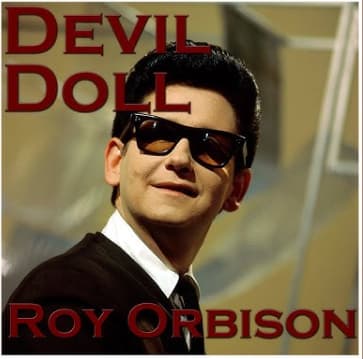
That Seductive, Heartbreaking Girl Who Broke the Rockabilly Mold
Oh, the early days of rock and roll! It was a time when the music felt raw, untamed, and bursting with a kind of electric youthful energy. Before the soaring ballads and the operatic drama that would later define his iconic sound, there was Roy Orbison—a young man with a distinct voice, cutting his teeth at the legendary Sun Records. And nestled deep in that early catalog, a true gem of rockabilly angst, is the track “Devil Doll.”
Originally released as the B-side to the single “Sweet and Easy to Love” in 1957 on Sun Records (Sun 265), “Devil Doll” didn’t set the charts ablaze upon its initial release. Unlike his slightly earlier Sun single, “Ooby Dooby,” which managed to crack the Billboard Pop chart at No. 59, “Devil Doll” did not achieve a measurable chart position. However, its importance lies not in its immediate commercial success but in what it represented: a formative step for a future legend. It was later featured on his first full-length album, Roy Orbison at the Rock House, released in 1961 by Sun, a move by label owner Sam Phillips to capitalize on the massive fame Orbison had achieved with hits like “Only the Lonely” after he moved to Monument Records. For many of us who remember those days, this early Sun material is a precious peek behind the curtain at the developing genius of the man who would become known as The Big O.
The story behind “Devil Doll” is inextricably linked to the Sun Records environment. Recorded in Memphis in 1957, sources indicate the song’s writing credit is shared between Roy Orbison and Sun founder Sam Phillips—a common practice in those early days of rock where producers often took or shared credit. This track is a quintessential piece of the Sun rockabilly sound: fast-paced, featuring a driving rhythm, electric guitar work, and a youthful, urgent vocal delivery. It’s short, punchy, and hits you with its heartache right away. The lyric itself is a lament of betrayal and romantic disillusionment. The narrator, who Orbison embodies with that signature tremble in his voice, sings about a young woman—the “Devil Doll”—who broke his heart after they “went steady in the fall” and “broke up in the spring.” He realizes his friends were right; she’s a flirt, a heartbreaker, seeing her affection as merely a game. The song’s meaning is clear: it’s the timeless agony of realizing your true love is a captivating but ultimately cruel seductress, a charming manipulator who collects broken hearts. The plea to her not to make his heart “just another heart, you’ve broken in the past” speaks to a universal fear of being just a footnote in someone else’s cavalier love story.
Listening back to it now, the track evokes a vivid sense of that era: the simple, heartfelt sincerity of young love and the devastating blow of its loss, all wrapped up in a frenetic, head-shaking beat. You can almost feel the grease in your hair and the slick of a jukebox counter under your palm. The emotional weight that would later anchor his monumental ballads is present here, even in this frenetic, two-minute burst of youthful energy. It’s a nostalgic journey back to a time when Roy Orbison was figuring out who he was, and in the process, helping to invent the soundtrack for a generation. It’s rockabilly with a tear in its eye, a powerful sign of the soulful majesty that was yet to come.